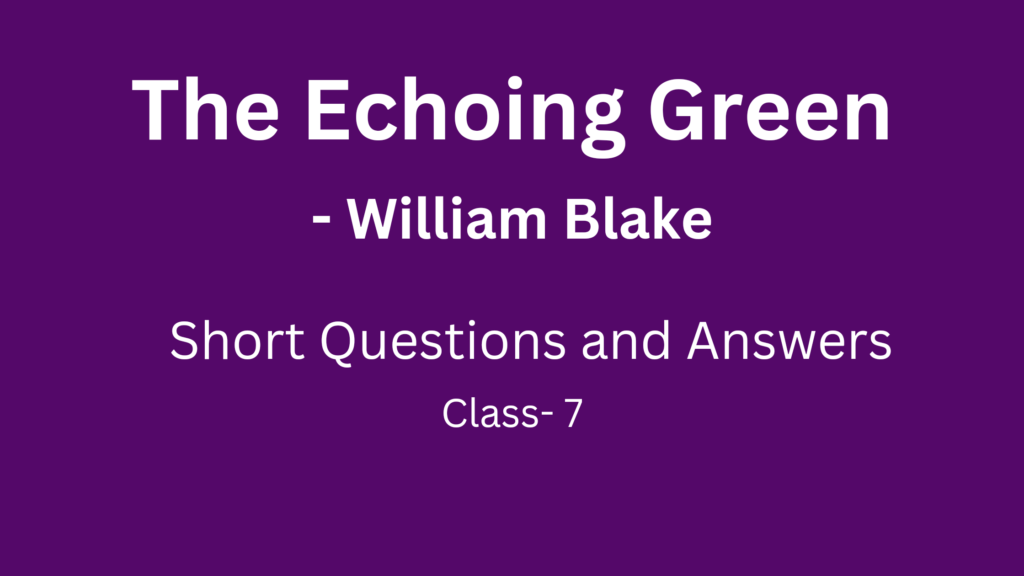
Biographical Sketch of the Poet:
William Blake (28 November, 1757 – 12 August, 1827) was a famous English poet, painter and printmaker. Completely unrecognized during his lifetime, Blake is now considered an influential figure in the history of the poetry and visual arts of the Romantic age. His visual artistry led one contemporary art critic to praise him as ” far and away the greatest artist Britain has ever produced”. Regarded as mad by contemporaries for his idiosyncratic views, Black is respected by later critics for his expressiveness and creativity, and for the philosophical and mystical undercurrents within his work.
His Songs of Innocence and Songs of Experience are the most celebrated work. The publication of The Life of William Blake rapidly transformed Blake’s reputation, in particular as he was taken up by the Pre- Raphaelites and associated figures, in particular Dante Gabriel Rossetti and Algernon Charles Swinburne. In the twentieth century, however, Blake’s work was fully appreciated and his influence increased.
About the Poem:
The poem portrays a beautiful scene where every aspect of nature is delighted with the appearance of the sun. Birds are singing in a cheerful tone to give the spring a warm welcome. In this merry time, some children are enjoying their sports in the echoing green.
Observing this joyous crowd, some elderly people would remember their childhood memories. As the sun plunges behind the horizon, and evening approaches, all sports come to an end and the children, tired to playing throughout the day, are ready to return home with their mothers. It is a joyful poem, celebrating spring.
Short Questions and Answers:
1) When does the sky become happy?
Ans- When the sun arises, the sky becomes happy.
2) Why do the merry bells ring?
Ans- The merry bells ring to welcome the spring.
3) What are the old men doing?
Ans- The old men are sitting under the tree and chatting.
4) Which are the two birds mentioned in the poem?
Ans- The Skylark and thrush are the two birds mentioned in the poem.
5) Who is sitting under the oak?
Ans- Old John is sitting under the oak.
Also read: Short Biographies for Class – 7 | English Biography
6) Pick out an expression from the poem to show that the old men are happy to see the children playing.
Ans- The expression is ” Such, such were the joys / When we all, girls and boys./ In our youth – time were seen / On the echoing green”.
7) What do the children do when evening descends?
Ans- When evening descends the children stop playing. The little ones go to the laps of their mothers to take rest.
8) What are the kids doing?
Ans- The kids are playing on the echoing green.
9) Was Old John sitting alone under the oak?
Ans- No, he was sitting among the oak folk.
10) What do the old folk do sitting under the oak tree?
Ans- Sitting under the oak tree the old people laugh at the children’s play and remember their childhood days.
11) How long did the boys and girls play?
Ans- The boys and girls played till they became weary.
12) How do the children become weary?
Ans- The children become weary by playing throughout the day.
13) What time of the day was it when the children stopped playing?
Ans- It was almost evening when they stopped playing.
14) What comparison is made here by the poet?
Ans- The poet compared the boys and girls to the birds resting in their nest.
15) Pick out a line from the poem to show that it was almost evening when they stopped playing.
Ans- “The sun does descend, / And our sports have an end.”
16) Name an Indian singing bird which is generally seen in spring.
Ans- Cockoo is an Indian bird which is seen in spring.
17) Which season is mentioned in the poem?
Ans- The spring season is mentioned in the poem.